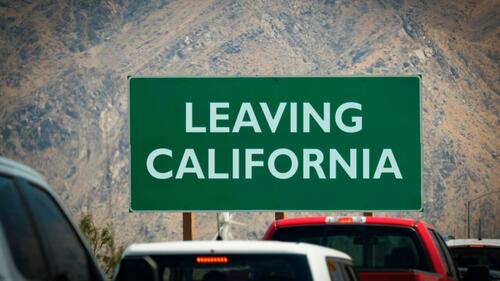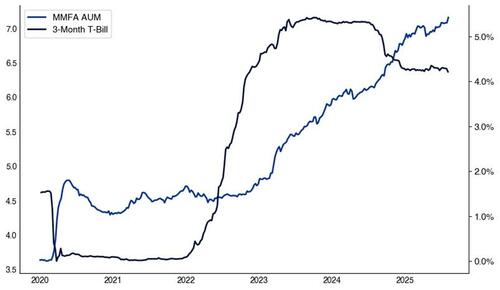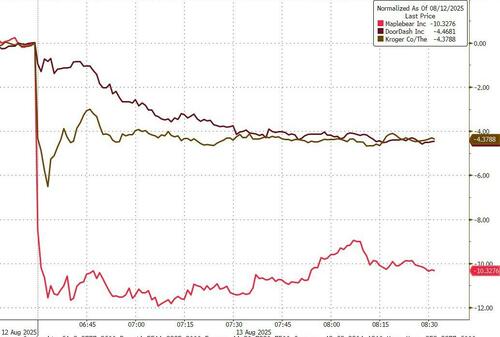Amazon Launches Same-Day Grocery Delivery: Instacart, Doordash, Supermarket Stocks Tumble
Home delivery services Instacart (CART) and Doordash (DASH) saw their stocks tumble after Amazon announced that it is now offering same-day grocery delivery in more than 1,000 cities and plans to bring the service to over 2,300 more by the end of the year, marking a major expansion as demand for food deliveries has remained resilient (which was to be expected in the laziest nation on earth).
Customers will be able to order perishable items such as produce, dairy, meat, seafood and baked goods, alongside frozen foods and household items, the company said in a statement on Wednesday.
Same-day grocery delivery is free for Amazon Prime subscribers on orders over $25 in most cities, it said. For non-members, the service carries a $13 fee, regardless of order size.
Considering there are zero barriers to the entry to the home delivery business, and it’s a natural expansion for companies which already have the “last-mile” delivery infrastructure in place, such as Amazon, it is surprising it took Amazon this long to disrupt the industry.
“Amazon.com’s latest move to grow food share by offering free same-day delivery of groceries, in tandem with core products for Prime members, could pull some on-demand orders away from rivals like Walmart and Kroger as its $25 minimum order undercuts theirs,” Bloomberg Intelligence analysts Poonam Goyal and Anurag Rana wrote in a note.
Shares of the food delivery company Instacart plummeted almost 11% on the news. Supermarket chain Kroger fell 4.3%. Walmart, which also offers same-day grocery delivery in some markets, dropped 1.3%. Ahold Delhaize, the owner of supermarket chains Stop & Shop, Food Lion, Giant and Hannaford, slipped 1.3%.
As Bloomberg notes, Amazon’s rationale for being in the famously low-margin grocery business is much the same as Walmart’s: to use regular pantry refills to drive traffic and coax shoppers to buy other products. Over the past few years, Amazon has built a large online business selling such staples as paper products, canned goods, pet food and health and beauty items. Those sales were supercharged when the pandemic forced many people to shop online for groceries and consumables for the first time.
But the company has been trying for years to figure out how to profitably sell fresh food, starting and killing a range of initiatives.
Amazon owns Whole Foods Market, the organic grocer. Amazon recently began exerting more control over the chain, largely ending its independence. Jason Buechel, the Whole Foods chief executive officer named Amazon’s grocery chief in January, said in a memo that the prior structure led to duplicative efforts and failed to make the most of employees.
Amazon also runs a chain of Amazon Fresh-branded mainstream grocery stores, which the company started opening early in the pandemic before slowing its expansion as executives reevaluated the stores.
The company’s announcement that it’s expanding food delivery follows a series of robust earnings reports from food- and restaurant-delivery companies, including Uber, DoorDash and Instacart that all confirmed US consumers are sticking with their ordering habits, despite broader concerns about the economy.
Tyler Durden
Wed, 08/13/2025 – 12:00













